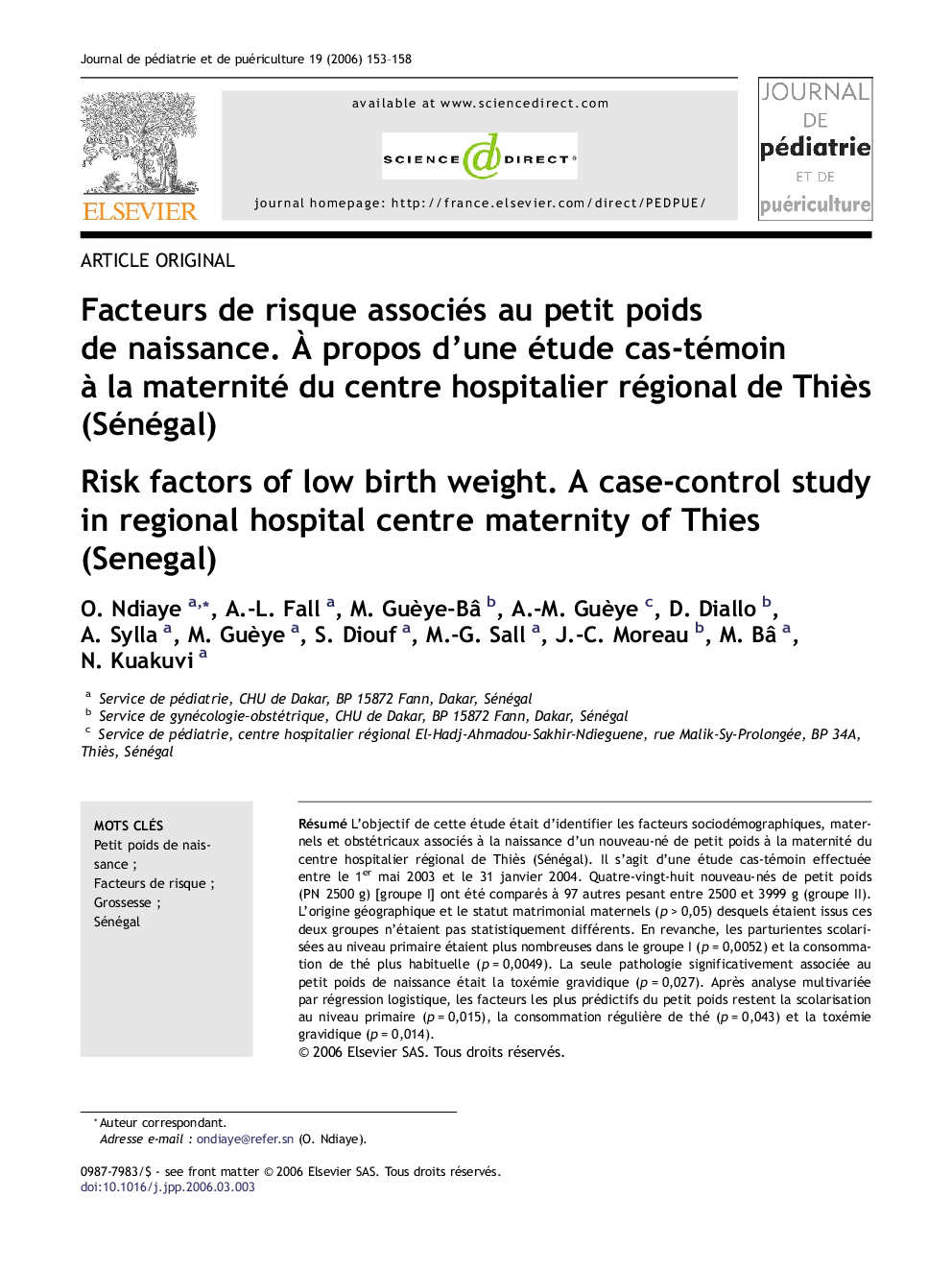| Article ID | Journal | Published Year | Pages | File Type |
|---|---|---|---|---|
| 4170438 | Journal de Pédiatrie et de Puériculture | 2006 | 6 Pages |
RésuméL'objectif de cette étude était d'identifier les facteurs sociodémographiques, maternels et obstétricaux associés à la naissance d'un nouveau-né de petit poids à la maternité du centre hospitalier régional de Thiès (Sénégal). Il s'agit d'une étude cas-témoin effectuée entre le 1er mai 2003 et le 31 janvier 2004. Quatre-vingt-huit nouveau-nés de petit poids (PN < 2500 g) [groupe I] ont été comparés à 97 autres pesant entre 2500 et 3999 g (groupe II). L'origine géographique et le statut matrimonial maternels (p > 0,05) desquels étaient issus ces deux groupes n'étaient pas statistiquement différents. En revanche, les parturientes scolarisées au niveau primaire étaient plus nombreuses dans le groupe I (p = 0,0052) et la consommation de thé plus habituelle (p = 0,0049). La seule pathologie significativement associée au petit poids de naissance était la toxémie gravidique (p = 0,027). Après analyse multivariée par régression logistique, les facteurs les plus prédictifs du petit poids restent la scolarisation au niveau primaire (p = 0,015), la consommation régulière de thé (p = 0,043) et la toxémie gravidique (p = 0,014).
The aim of this study was to identify socio-demographic and obstetric risk factors of low birth weight in the maternity of Thiès regional hospital centre. It is a case-control study that took place between May 1st, 2003 and January 31th, 2004. Eighty-eight newborns with low weight (2500 g) [group I] were compared to those of 97 other infants weighing 2500 to 3999 g (group II). Maternal geographic origin and matrimonial statute were not statically different between the two groups (P > 0.05). On the other hand, parturients with primary level education (P = 0.0052) and those with regular consumption of tea (P = 0.0049) were more frequent in group I. The only pathology significantly associated with low birth weight was toxaemia (P = 0.027). After analysis by logistic regression, more predictive factors of low birth weight remain primary level education (P = 0.015), regular consumption of tea (P = 0.043) and toxaemia (P = 0.014).
